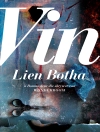Bioart — art that uses either living materials (such as bacteria or transgenic organisms) or more traditional materials to comment on, or even transform, biotechnological practice — now receives enormous media attention. Yet despite this attention, bioart is frequently misunderstood. Bioart and the Vitality of Media is the first comprehensive theoretical account of the art form, situating it in the contexts of art history, laboratory practice, and media theory.
Mitchell begins by sketching a brief history of bioart in the twentieth and twenty-first centuries, describing the artistic, scientific, and social preconditions that made it conceptually and technologically possible. He illustrates how bioartists employ technologies and practices from the medical and life sciences in an effort to transform relationships among science, medicine, corporate interests, and the public. By illustrating the ways in which bioart links a biological understanding of media — that is, “media” understood as the elements of an environment that facilitate the growth and development of living entities — with communicational media, Bioart and the Vitality of Media demonstrates how art and biotechnology together change our conceptions and practices of mediation. Reading bioart through a range of resources, from Immanuel Kant’s discussion of disgust to Gilles Deleuze’s theory of affect to Gilbert Simondon’s concept of “individuation, ” provides readers with a new theoretical approach for understanding bioart and its relationships to both new media and scientific institutions.
Tabla de materias
Acknowledgments
Introduction: Living Art
1. Defining Bioart: Representation and Vitality
2. The Three Eras of Vitalist Bioart
3. Bioart and the Folding of Social Space
4. Affect, Framing, and Mediacy
5. The Strange Vitality of Media
6. Bioart and the ‘Newness’ of Media
Notes
Works Cited
Index
Sobre el autor
Robert Mitchell is associate professor of English at Duke University. He is the author, with Catherine Waldby, of Tissue Economies: Blood, Organs, and Cell Lines in Late Capitalism and, with Phillip Thurtle, Data Made Flesh: Embodying Information and Semiotic Flesh: Information and the Human Body.












